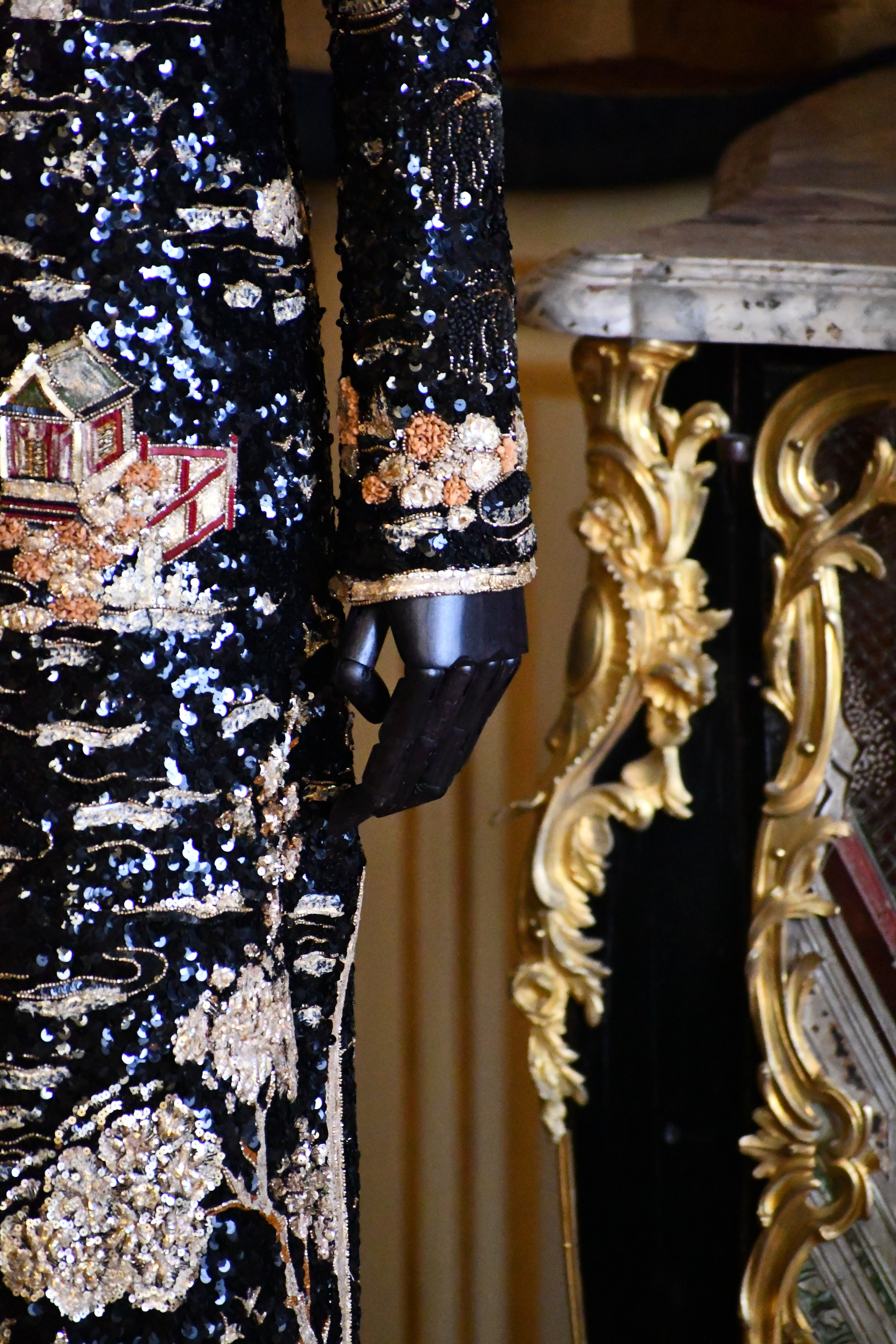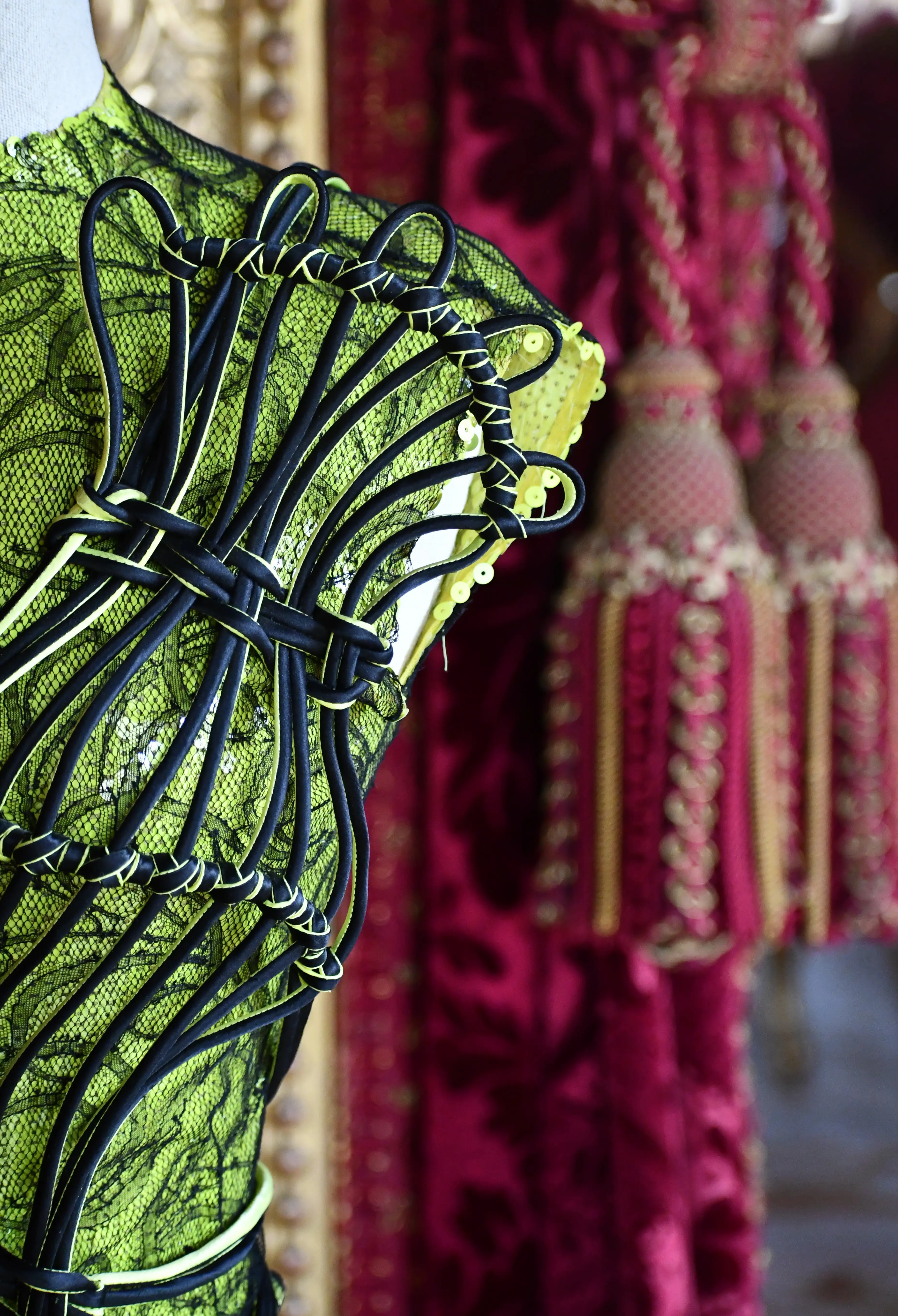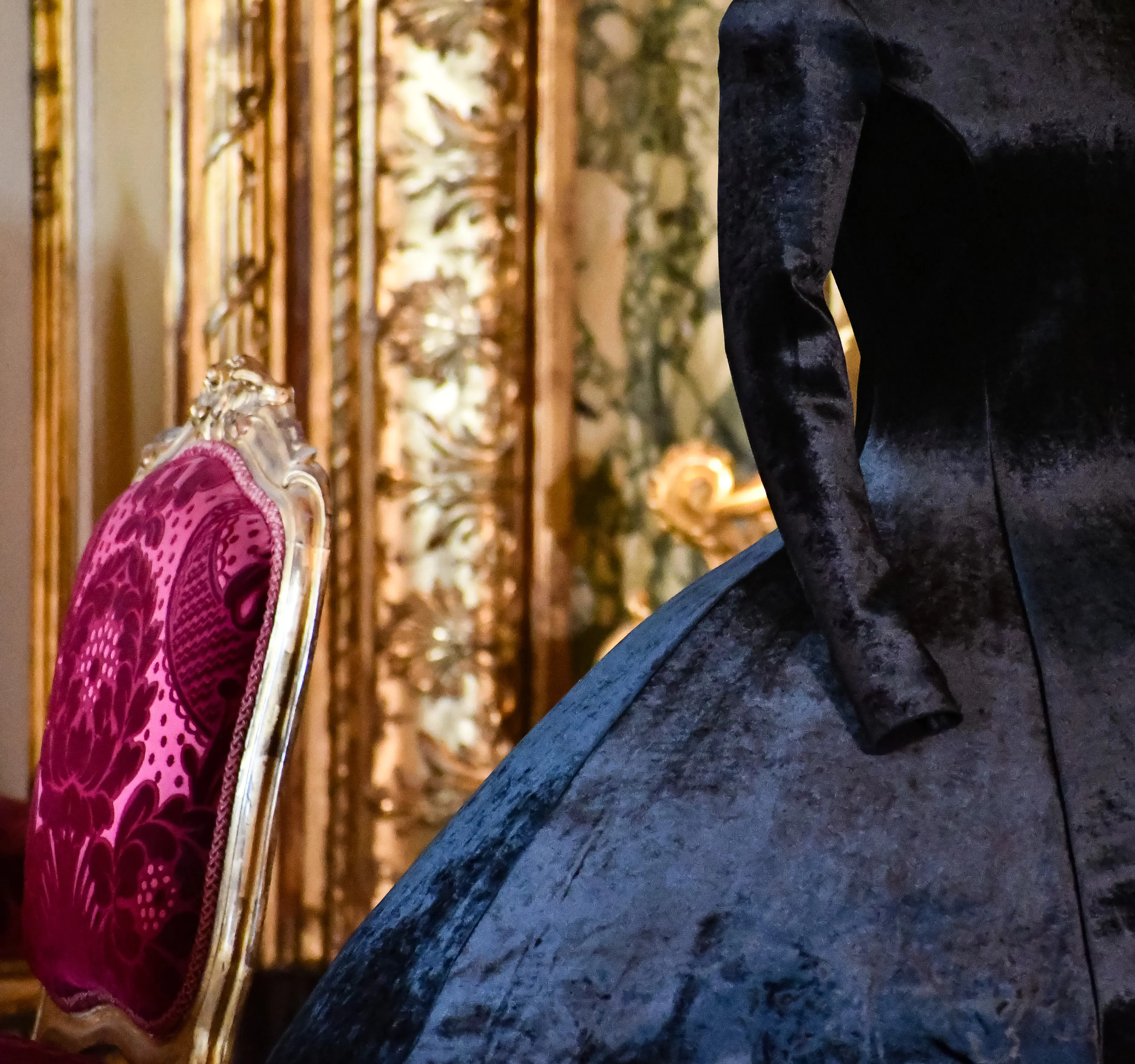
It is commonly said that to see every artwork in the Louvre, one would have to spend only 30 seconds per piece—and even then, it could take over 100 days to view the entire collection. Adding to this, a selection of 95 pieces of portraiture and 30 accessories, shoes, and similar items makes the task even more overwhelming.

The world’s most important museum has opened its first exhibition dedicated to fashion in its 232-year history, titled Louvre Couture: Objets d’art, objets de mode (“Couture at the Louvre: works of art, works of fashion”). Running from January 24 to July 27, 2025, the installation was curated with the intention of juxtaposing key pieces in the history of high fashion—created by its most illustrious designers—with the Decorative Arts section of the Louvre, displayed in the salons of Napoleon III in the Richelieu wing. In this luxurious setting, the former French royalty’s jewelry collection is also exhibited.

The selection for this exhibition is exquisite. Every legendary designer who has shaped fashion—Galliano, Gaultier, Saint Laurent, Dior, Versace (both Gianni and Donatella), Balenciaga, Yamamoto, Chanel, Lagerfeld, Schiaparelli, McQueen, Dolce & Gabbana—has been represented. Shoes, accessories, and jewelry provided by brands such as Louboutin, Tiffany’s, and Chopard contribute to a veritable cocktail of luxury and sophistication.

While the concept sounds amazing in theory, executing a project of this nature is not easy, and the final result may not fully meet expectations. In an exhibition where luxury fashion is the main focus, using the most visually charged section of the world’s largest museum as a backdrop makes it difficult to decide whether the attention should be on the garments or the setting. The exquisite details of many pieces are lost in such a confined space, and grouping them together makes it challenging to appreciate each work with the attention it deserves.
Additionally, the high traffic at the Louvre—especially at this exhibition—forces visitors to move faster than they would like, disrupting their route and making it harder to fully enjoy the experience.
It seems that the Louvre has decided to create its own version of the legendary fashion design exhibitions seen at New York City’s Metropolitan Museum of Art Costume Institute—a notion further underscored by the first charity dinner of Louvre Couture, essentially a nod to the MET Gala. Public opinion is expected to demand better planning and space selection within the museum, so that the exhibited fashion works can be fully appreciated without being overshadowed by the gigantic, richly decorated tapestries on the walls or the rococo wardrobes and porcelain displayed alongside them. The world’s leading museum has the logistical and human resources—and, most importantly, the savoir-faire—necessary for this task. It will be worth deploying them to their fullest extent for future projects of this caliber.



